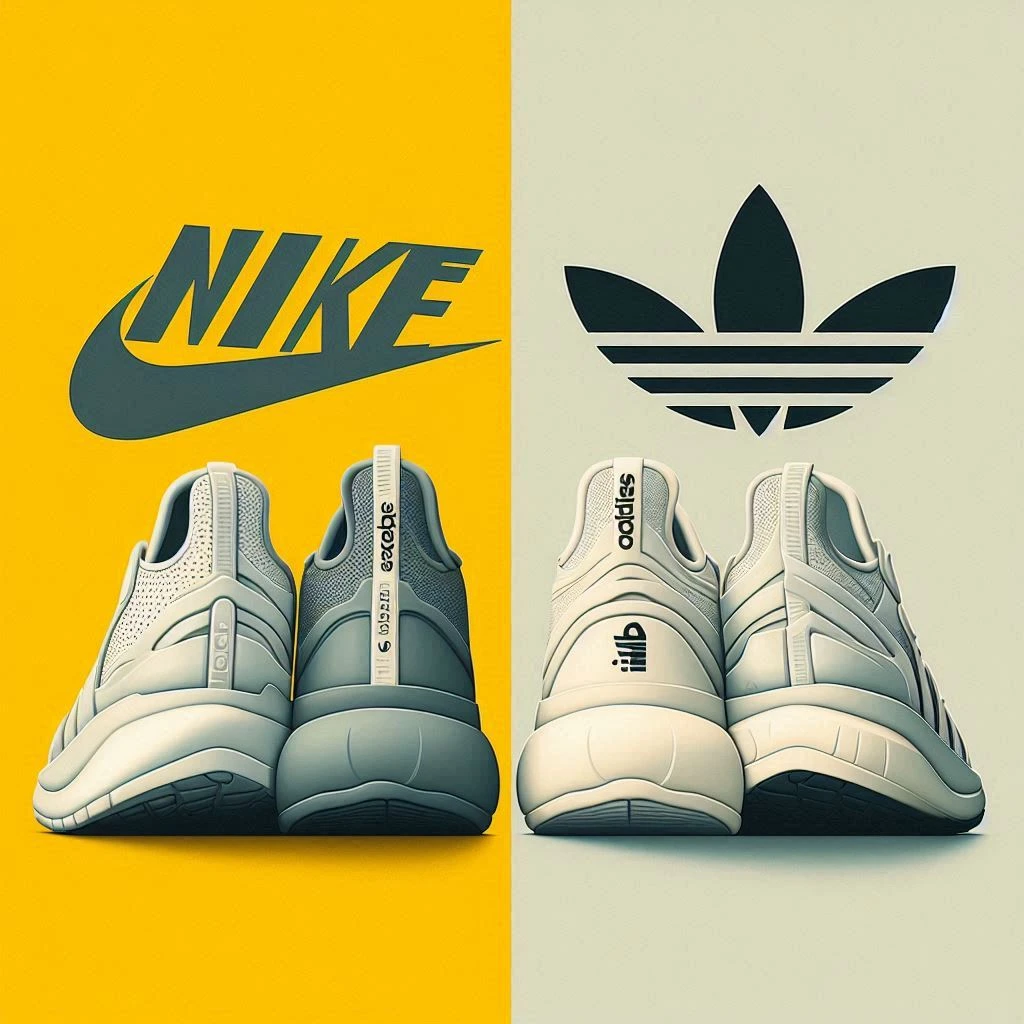
When you think of sportswear, two names instantly come to mind: Nike and Adidas. Both brands are the biggest players in the global athletic apparel and footwear industry—a market valued at $412.90 billion in 2024.
And guess what? Both brands have mastered the art of appealing to a wide range of customers, from hardcore athletes to sneakerheads and fashionistas.
However, the way they market themselves is completely different. And that’s where things get interesting.
In this blog, we will take a deep dive into the epic marketing rivalry of Nike vs Adidas. We will begin by understanding both brands and then delve into the details of their strategies.
Table of Contents
- An overview of the brands
- Nike vs Adidas: Brand’s Target Customers & Positioning
- Nike vs Adidas: Marketing Strategy
- Standout Campaign
- Challenges for Nike & Adidas
- Current Standing of Brands Adidas v/s Nike
- In Conclusion
- Frequently Asked Questions
An Overview of the Brands
Nike
Founded way back in 1964, Nike has grown into a globally iconic brand. Everyone recognises the “Swoosh” logo and of course, the “Just Do It” tagline—just three words, but the impact is amazing.
But did you know that Nike’s story began with a humble idea? Back in 1964, University of Oregon track coach Bill Bowerman and his former student Phil Knight joined forces to start Blue Ribbon Sports.
The duo wanted to create high-quality, affordable athletic shoes that would give American runners an edge over their European counterparts. The name “Nike,” inspired by the Greek goddess of victory, didn’t come until 1971 when the iconic Swoosh logo was also born.
The rest, as they say, is history. Nike’s first big break came when they signed a relatively unknown basketball player named Michael Jordan in 1984. That partnership not only turned Air Jordans into a cultural phenomenon but also propelled Nike to global fame.
So, what was the thought behind Nike’s creation? It was simple—make better shoes for athletes and help them reach their full potential.
This idea of empowerment through sports has stayed at the core of Nike’s brand ever since.
Adidas
Adidas, on the other hand, has a story rooted in family and craftsmanship. The brand was founded in 1949 by Adolf “Adi” Dassler in Herzogenaurach, Germany.
However, Adi had been making shoes since the 1920s with his brother Rudolf under the brand name Gebrüder Dassler Schuhfabrik.
The brothers eventually split due to personal differences, with Rudolf going on to create Puma—another sportswear giant.
Adidas’ big moment came during the 1954 FIFA World Cup when the German national football team wore Adidas boots and clinched the title. This victory not only boosted Adidas’ profile but also solidified their reputation for innovation in sports gear.
Nike vs. Adidas: Brand’s Target Customers & Positioning
When comparing Nike and Adidas, understanding their audiences is crucial. Both brands target a broad demographic, but their approach to engaging these audiences is distinct.
Target Customers of Nike & Adidas
Nike’s audience is diverse, spanning from teenagers to those in their mid-forties. This broad appeal allows Nike to tap into multiple generations. For younger consumers, Nike isn’t just a brand—it’s a lifestyle, something they grow up with and continue to support as they get older.
The brand’s ability to resonate with this demographic is so strong that it has become the most popular brand among teens in the U.S. in Spring 2024.
But Nike doesn’t just stop at the youth. By also appealing to middle-aged consumers who have disposable income, Nike ensures they maintain a loyal customer base across different life stages.
Adidas, meanwhile, appeals to a slightly older crowd—think millennials and Gen X. Their audience is drawn to the brand’s cool mix of performance and style.
Adidas fans aren’t just about sports; they’re into fashion, music and urban culture. They appreciate a brand that can keep them looking fresh on the streets and functional in the gym.
Brand Positioning of Nike & Adidas
Before we dive in, let’s give a nod to the International Journal of Business Management and Economic Research, which— gives us some great insights into the brand strategies of these two giants.
Now, let’s break down how Nike and Adidas carve out their unique spaces in the competitive world of sportswear.
Nike’s brand strategy is deeply rooted in innovation. They’re not just about keeping up with the competition; they aim to set the pace. This drive is powered by a continuous focus on research and development.
Their Research and Development team is constantly on the hunt for new ways to make their products more efficient, more comfortable and just plain better. Nike’s got this down to a science—they’re not just selling shoes or apparel; they’re selling performance.
Adidas, on the other hand, takes a slightly different route. While they also focus on innovation, their strategy leans heavily on broad differentiation. What does that mean? Essentially, Adidas doesn’t just cater to one type of customer—they’ve got something for everyone, from professional athletes to casual gym-goers and even those who just want to rock some stylish streetwear.
And while Nike may have a slight edge in terms of celebrity endorsements, Adidas isn’t far behind. They’ve collaborated with some of the biggest names in sports, music and fashion to create buzz-worthy campaigns that resonate with a younger, trend-savvy audience.
Become the Brand People Love
Nike vs Adidas: Marketing Strategy
SEO Marketing Strategy
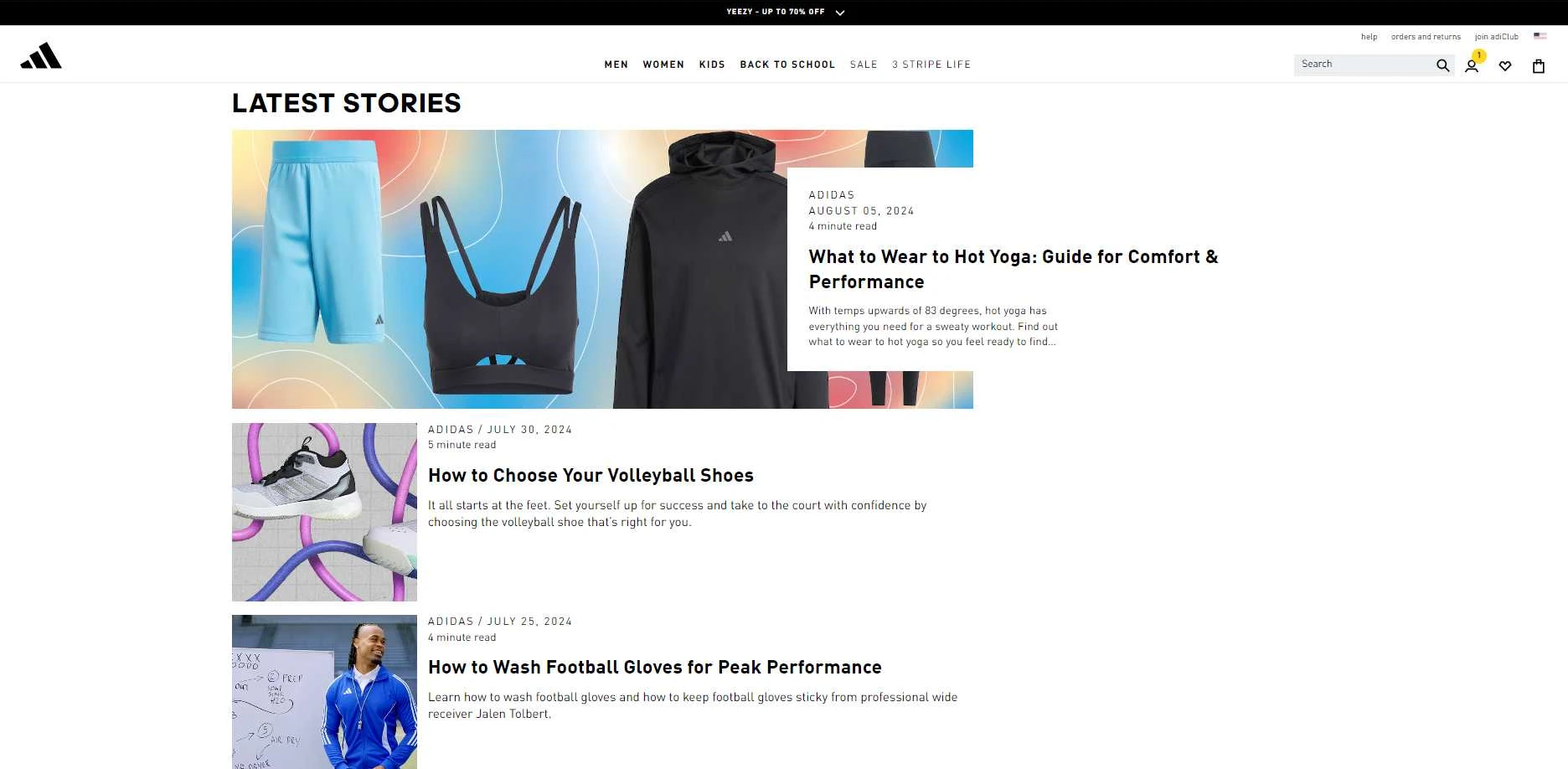
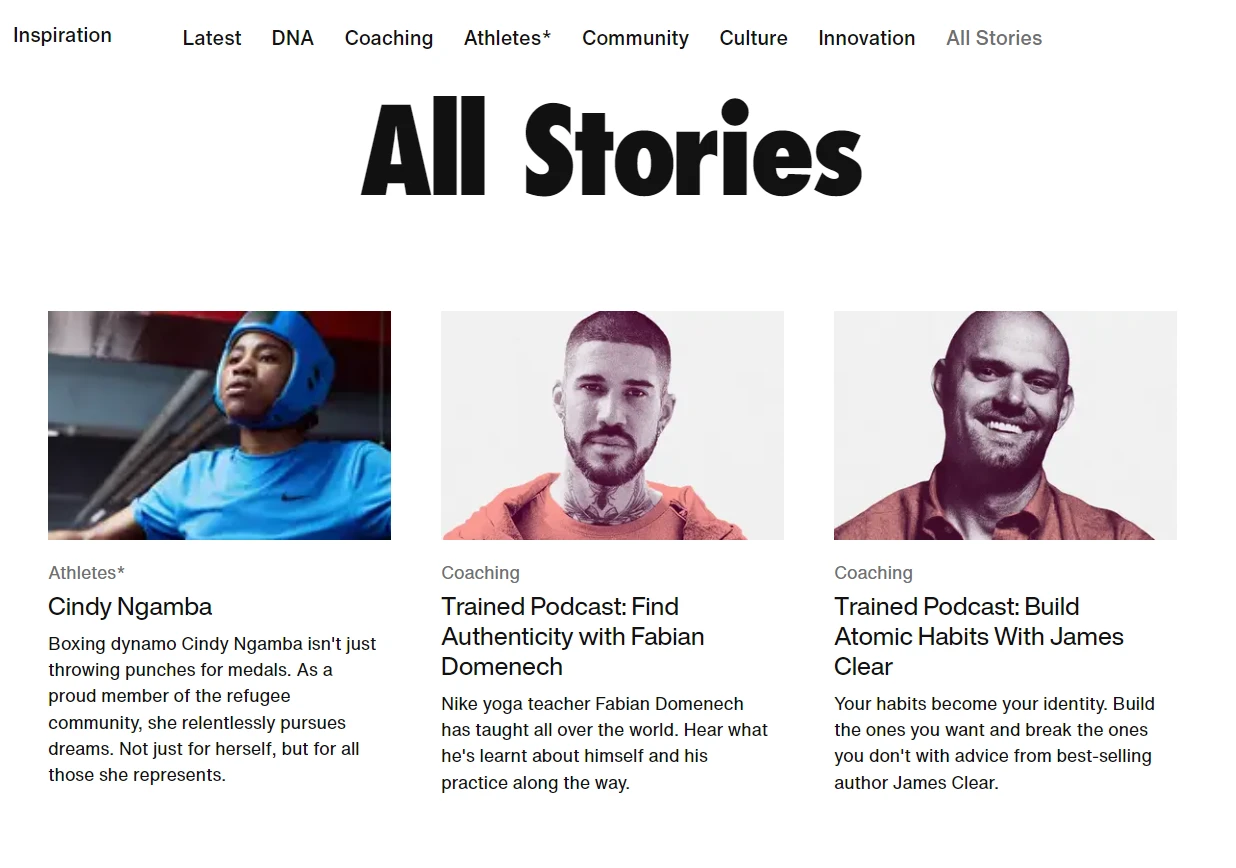
Nike’s website is packed with athlete stories, product innovations and blogs that are all meticulously optimised for search engines. They use keywords that focus on fitness, performance and sportswear, making sure they’re at the top of your search results when you’re looking for anything related to these topics.
Adidas takes a more community-driven approach to SEO. Their strategy revolves around creating content that connects with their audience’s lifestyle and interests. From sustainability initiatives to fashion trends, Adidas uses keywords that appeal to a broader range of interests. This not only helps them rank for sports-related searches but also for lifestyle and fashion queries.
Social Media Marketing Strategies
Nike’s social media strategy is all about connecting with its audience on an emotional level. They put a strong emphasis on storytelling and inspire their followers.
They make it a point to tell the audience to push their limits. Their content is such that it resonates deeply with sports fans.
Take Nike’s “Winning Isn’t For Everyone Campaign” for example. It features a lineup of Olympic athletes showcasing their fierce drive to win. The campaign dives deep into the grit and grinds it takes to reach the pinnacle of athletic greatness.
Take a look at the campaign here.
So, Nike’s social media strategy is all about connecting with you on a personal level. They’ve built a community that feels like a family of champions. Pretty cool, right?
On the other hand, Adidas uses a mix of social media marketing strategies. It has done campaigns around sustainability. “End Plastic Waste” is one such example.
View this post on Instagram
Influencer Marketing
Nike’s influencer marketing strategy is all about star power. They work with some of the biggest names in sports—LeBron James, Serena Williams and Cristiano Ronaldo, to name a few. These aren’t just endorsements; they’re full-blown collaborations that integrate the athlete’s persona with Nike’s brand, creating iconic campaigns and products that fans love.
Adidas, on the other hand, casts a wider net with its influencer marketing. They don’t just stick to athletes; they work with musicians, fashion influencers and cultural icons. Their partnerships with celebrities like Pharrell Williams and Stella McCartney have been particularly successful, blending music, fashion and sports into one cohesive brand strategy. This approach has helped Adidas connect with a broader, more culturally diverse audience.
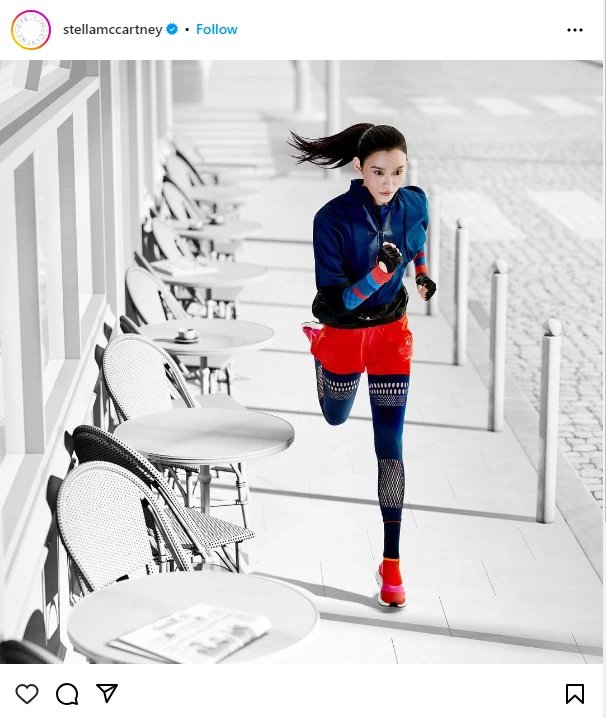
Standout Campaign
Nike’s “Just Do It” campaign is nothing short of legendary when it comes to memorable marketing. Although it was launched in 1988 — it still lives rent-free in the hearts of advertisers. The reason is that the campaign defined Nike’s tagline.
The campaign urged viewers to chase their dreams, push past obstacles and simply take action. The campaign’s simplicity, combined with its powerful message, resonated deeply with audiences around the globe.
The phrase quickly became a hallmark of Nike’s brand, symbolising its commitment to motivating individuals and connecting on an emotional level.
They still continue the campaign with different series.
Adidas has also delivered some unforgettable campaigns that have left a mark on the sportswear industry. One of their most impactful was the “Impossible Is Nothing” campaign, inspired by Muhammad Ali’s famous words.
The campaign featured a stellar lineup of athletes, including Muhammad Ali himself, David Beckham, Zinedine Zidane and Michel Platini.
With its motivational vibe and a stirring soundtrack, the campaign urged viewers to surpass their limits and embrace their potential.
The campaign’s ability to resonate with so many people turned it into one of the most influential ads of all time. You can still feel the energy and inspiration from this campaign whenever it pops up in conversations about great ads.
However, it’s hard for brands to come up with this type of campaign especially if you are at a growing stage.
But, you can use your resources optimally and still do out-of-the-box campaigns according to your budget with the help of a digital marketing agency.
Challenges for Nike & Adidas
Both brands have fallen into controversies several times. These controversies brought significant challenges in terms of revenues and brand image.
Nike’s 2018 Colin Kaepernick ad campaign led to a major mishap for the brand. What happened was that Colin Kaepernick refused to stand up during the national anthem as a protest against racial injustice in America.
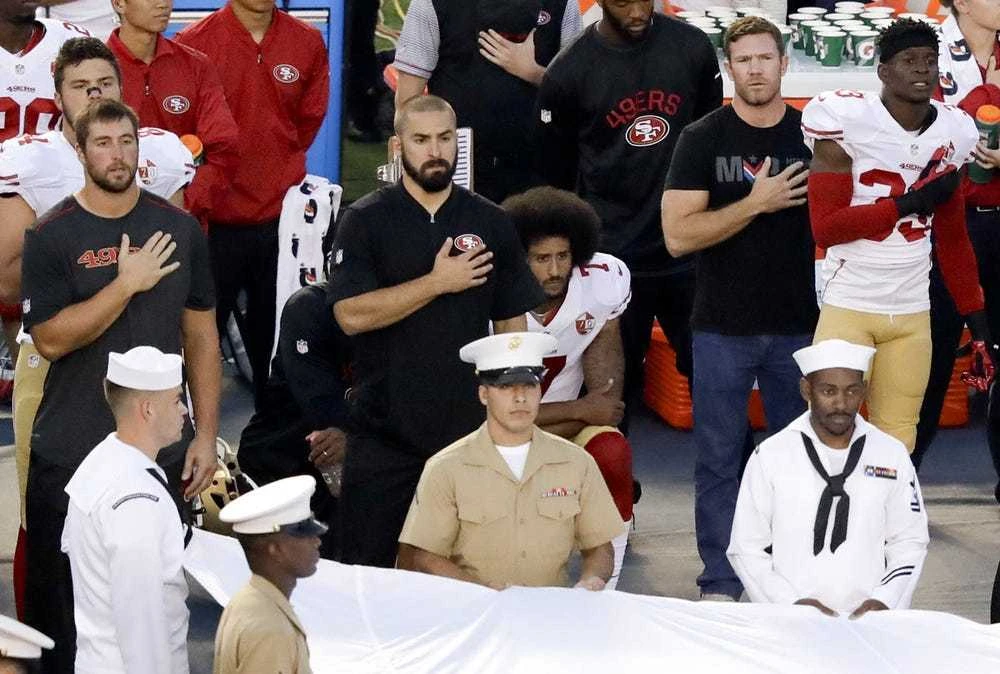
After that, Nike collaborated with him for the “Just Do It” campaign”. Because a lot of people thought he disrespected the nation — they started burning Nike shoes when they launched the campaign.


At that time Nike’s share price dropped by 2%. What Nike did about this is even more interesting.
They received support from athletes like LeBron James and Serena Williams. When they supported the campaign, it became clear that Nike was standing against racism with the campaign.
After all this, Nike got a lot of coverage from news channels as it was a trending news. So in the end — they managed to gain traction.
Adidas has also fallen into a major controversy like this. Back in 2013 — when Adidas partnered with popular rapper Kanye West for a collection called Yeezy, it was a massive success.
However, Kanye’s public outbursts and controversial statements caused tensions. So in 2022 – Adidas ended the partnership.
The termination of the Yeezy partnership had immediate financial repercussions for Adidas. The brand faced a considerable loss of revenue from Yeezy sales and was left with a surplus of unsold Yeezy inventory.
The decision to cut ties was seen as a move to distance the brand from the controversy surrounding West, but it came at a high cost. The company reported a loss of $540 million.
Despite massive losses — the company is still standing strong today.
So it all boils down to how you tackle challenges.
Current Standing of Brands Adidas vs Nike
| Metric | Nike | Adidas |
|---|---|---|
| Social Media Followers | 300 million+ | 29 million+ |
| Average Social Media Engagement | 0.02% | 0.04% |
| Revenue (2023) | $47.78 billion (Euros) | $21.43 billion (Euros) |
Concluding thoughts
One big takeaway from the Nike vs. Adidas rivalry is the power of selling inspiration, not just products. Nike shows us that when you tie your brand to something meaningful, like — empowerment or — social justice, you create a connection that goes beyond just shoes and apparel.
It’s about the feeling your brand evokes, not just the features of your products.
On the flip side, Adidas teaches us the value of versatility and relevance. By blending performance with cultural trends, they reach a broader audience.



